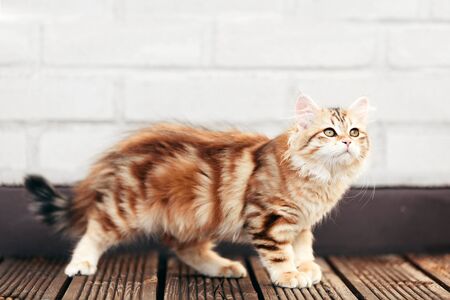1. Understanding Your Exotic Pet’s Natural Habitat
Choosing the best substrate for your exotic pet starts with understanding its natural habitat. Different species come from unique environments that influence their needs, including humidity, temperature, and the type of ground they live on. By replicating these conditions as closely as possible, you can help ensure your pet stays healthy and comfortable.
Research Your Pet’s Native Environment
Before selecting a substrate, take time to learn about where your pet comes from. Is it a desert-dwelling reptile that thrives in dry, sandy conditions? Or does it originate from a tropical rainforest where moisture levels are high? Matching the substrate to its natural environment is key to maintaining proper health.
Key Environmental Factors to Consider
| Factor | Description |
|---|---|
| Humidity | Certain pets, like tropical amphibians, require high humidity, while desert reptiles need dry conditions. |
| Temperature | The substrate should help maintain the appropriate temperature for your pet’s comfort. |
| Substrate Type | The right substrate mimics your pet’s natural flooring, whether its sand, soil, or bark. |
The Importance of Proper Substrate Selection
A well-chosen substrate does more than just make your pet’s enclosure look good—it plays a crucial role in maintaining proper humidity levels, aiding in burrowing behaviors, and even preventing health issues like respiratory problems or skin infections. Using an inappropriate substrate can lead to discomfort or illness.
Tropical vs. Desert Substrates
If your pet hails from a tropical environment, substrates that retain moisture, such as coconut fiber or sphagnum moss, are ideal. For desert species, sand-based or dry substrates like reptile carpet may be better suited.
Avoiding Harmful Substrates
Certain substrates can be dangerous for exotic pets. For example, fine sand may cause impaction in some reptiles if ingested, while cedar shavings can release harmful oils affecting respiratory health. Always research before making a decision.
2. Types of Substrates and Their Pros and Cons
Choosing the right substrate for your exotic pet’s habitat is crucial for their health and comfort. Different substrates have unique benefits and drawbacks, so its important to understand which one works best for your pets specific needs. Below, we explore some common substrate options, including sand, soil, bark, and paper-based materials.
Sand
Sand is a popular choice for desert-dwelling reptiles like bearded dragons and leopard geckos. It mimics their natural environment and allows for burrowing.
| Pros | Cons |
|---|---|
| – Provides a natural look | – Can cause impaction if ingested |
| – Allows for burrowing behavior | – Difficult to clean |
| – Retains heat well | – Can create dust that affects respiration |
Soil
A great option for amphibians and reptiles that require humidity, soil holds moisture well and supports plant growth in bioactive setups.
| Pros | Cons |
|---|---|
| – Maintains humidity levels | – Can harbor mold if too damp |
| – Encourages natural digging behavior | – Requires frequent replacement to stay fresh |
| – Works well in bioactive enclosures | – May contain pests if not sterilized properly |
Bark and Wood Chips
Bark-based substrates are commonly used for reptiles, amphibians, and small mammals needing a soft surface with moisture retention.
| Pros | Cons |
|---|---|
| – Holds moisture to maintain humidity | – Can develop mold in overly damp conditions |
| – Provides a natural aesthetic | – Some types may have sharp edges that can harm pets |
| – Suitable for burrowing species | – Small pieces may be accidentally ingested by pets |
Paper-Based Materials (Newspaper, Paper Towels, Pellet Bedding)
A cost-effective and easy-to-clean choice, paper-based substrates work well for many exotic pets, especially those requiring a low-maintenance enclosure.
| Pros | Cons |
|---|---|
| – Easy to replace and clean regularly | – Lacks a natural appearance |
| – Reduces risk of impaction | – Doesn’t allow for burrowing or digging |
| – Absorbs waste efficiently | – Needs frequent changing to prevent odors |
Selecting the Right Substrate for Your Pet’s Needs
The best substrate depends on your exotic pet’s species, habitat requirements, and personal preferences. Consider factors such as humidity control, ease of cleaning, safety, and whether your pet likes to dig or burrow. By carefully weighing the pros and cons of each option, you can create a comfortable and healthy living space tailored to your pet’s needs.

3. Safety Considerations When Choosing a Substrate
Picking the right substrate for your exotic pet isn’t just about comfort—it’s also about safety. Some substrates can pose serious health risks, including impaction, mold growth, and toxicity. Understanding these risks will help you make the best choice to keep your pet healthy and thriving.
Impaction Risks
Impaction occurs when an animal accidentally ingests substrate material that then blocks their digestive system. This is a common issue in reptiles like bearded dragons and leopard geckos. Loose substrates, such as sand or crushed walnut shells, are often the main culprits.
How to Prevent Impaction:
- Avoid loose substrates if your pet tends to ingest them while eating.
- Use reptile carpet, paper towels, or bioactive substrates with digestible components.
- Monitor your pet’s behavior—if they frequently eat their substrate, switch to a safer option.
Mold and Bacterial Growth
Damp or poorly ventilated substrates can quickly become breeding grounds for mold and bacteria. This is especially dangerous for amphibians and reptiles that thrive in humid environments.
Signs of Mold Issues:
- A musty odor coming from the enclosure.
- Visible white or green fuzzy patches on the substrate.
- Your pet showing respiratory issues or skin irritation.
Preventing Mold Growth:
- Choose moisture-retaining substrates like coconut fiber but ensure proper ventilation.
- Avoid overly damp bedding materials unless necessary for humidity control.
- Spot-clean daily and replace substrate regularly to prevent buildup of harmful bacteria.
Toxicity Concerns
Certain types of bedding contain chemicals or natural oils that can be toxic to exotic pets. Cedar and pine shavings, for example, release aromatic compounds that may cause respiratory problems in small mammals and reptiles.
Toxic vs. Safe Substrates:
| Toxic Substrates | Safe Alternatives |
|---|---|
| Cedar & Pine Shavings | Aspen Shavings or Paper-Based Bedding |
| Scented Litters | Unscented, Natural Substrates |
| Dyes & Chemically Treated Wood Chips | Coconut Fiber or Organic Soil |
Avoiding Toxic Materials:
- Always check product labels for additives, dyes, or scents that could harm your pet.
- If using natural materials like soil or moss, make sure they are free from pesticides and fertilizers.
- If unsure about a substrate’s safety, consult with a veterinarian or experienced exotic pet keeper.
The right substrate should promote your pet’s well-being by being safe, clean, and appropriate for their needs. By avoiding impaction risks, preventing mold growth, and steering clear of toxic materials, you’ll create a healthier environment for your exotic companion.
4. Maintenance and Cleaning Requirements
Keeping your exotic pet’s habitat clean is essential for their health and well-being. Choosing the right substrate involves understanding how often it needs to be changed, its odor control properties, and the overall ease of maintenance. A low-maintenance substrate can make pet care easier while ensuring a hygienic environment.
How Often Should You Change the Substrate?
The frequency of substrate changes depends on the type of material used and your pets habits. Some substrates require daily spot cleaning, while others can last longer before needing a full replacement. Here’s a general guideline:
| Substrate Type | Spot Cleaning Frequency | Full Replacement Frequency |
|---|---|---|
| Paper-Based Bedding | Daily | Every 5-7 days |
| Coconut Fiber | A few times per week | Every 2-4 weeks |
| Reptile Carpet | Daily | Wash weekly |
| Sand or Gravel | A few times per week | Every 3-4 weeks |
| Bark Chips/Wood Shavings | A few times per week | Every 2-3 weeks |
Odor Control Properties
A good substrate should help manage odors to keep your pet’s enclosure smelling fresh. Some materials naturally absorb moisture and neutralize smells better than others. For example:
- Coconut fiber: Excellent at absorbing moisture and controlling odors.
- Bark chips: Provides moderate odor control but may need frequent replacement.
- Pine or cedar shavings: While they have natural scent-masking properties, some can release oils that may be harmful to certain pets.
- Paper-based bedding: Highly absorbent but may need frequent changes to prevent odors.
- Sand or gravel: Limited odor control; requires regular cleaning.
Simplifying Cleaning and Maintenance
If you prefer an easy-to-maintain substrate, consider using materials that are simple to clean and replace. Here are some tips:
Selecting Easy-to-Clean Substrates
- Liner-based options like reptile carpet: Can be removed, washed, and reused.
- Pelleted bedding: Clumps together when wet, making spot cleaning easier.
- Coconut fiber or paper-based bedding: Lightweight and easy to replace when soiled.
Mistakes to Avoid in Substrate Maintenance
- Avoid using overly dusty substrates: They can cause respiratory issues for both you and your pet.
- Damp or moldy bedding should be replaced immediately: Moisture buildup can lead to bacterial growth.
- Ditch strong chemical cleaners: Some cleaning products can leave harmful residues; opt for pet-safe disinfectants instead.
A clean habitat is essential for your exotic pet’s health. By choosing a substrate that balances odor control, ease of maintenance, and appropriate change frequency, you’ll create a comfortable living space for your pet while making upkeep more manageable for yourself.
5. Matching Substrate to Your Pet’s Behavior and Needs
Choosing the right substrate is essential for your exotic pet’s comfort and well-being. Different species have unique behaviors and environmental needs, so selecting a substrate that supports their natural instincts is crucial. Consider factors like burrowing, climbing, and moisture retention to create the ideal habitat.
Understanding Your Pet’s Natural Behaviors
Before selecting a substrate, observe how your pet interacts with its environment. Does it love to dig tunnels? Does it require a dry or humid setting? Matching the substrate to these behaviors will help keep your pet happy and healthy.
Key Factors to Consider
| Behavior | Ideal Substrate Type |
|---|---|
| Burrowing | Coconut fiber, organic soil, or shredded bark to allow digging. |
| Climbing | Bark chips or moss to provide grip and stability. |
| Moisture Retention | Sphagnum moss, cypress mulch, or coconut husk to maintain humidity. |
| Drier Environments | Sand, reptile carpet, or aspen shavings for low-humidity habitats. |
Selecting the Best Fit for Your Pet
If your pet enjoys burrowing, opt for loose and soft substrates that allow digging. For pets that require high humidity, choose materials that retain moisture well without becoming moldy. If you have an arboreal species that likes to climb, ensure the substrate provides traction and stability.
Avoiding Harmful Substrates
Certain substrates can pose health risks. Avoid cedar and pine shavings as they contain oils that can be toxic to reptiles and small animals. Sand may not be suitable for all species due to potential ingestion risks. Always research your pet’s specific needs before making a final decision.
Creating a Comfortable Habitat
The right substrate helps mimic your pet’s natural environment, promoting healthy behaviors and reducing stress. By understanding your exotic pet’s lifestyle and preferences, you can create a habitat that keeps them thriving.


